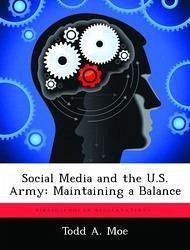Now that the Department of Defense has permitted the use of social media for both private and official purposes, the question becomes, can the military, the Army in particular, obtain the benefits sought from social media use without seriously compromising individual and operations security? Answering this question required an initial assessment of Army goals and objectives to determine why the Army risked the use of social media. The assessment revealed two reasons. First, the Army needed social media to communicate its inform and influence activities more effectively. Second, social media was the primary means by which soldiers maintained contact with their friends and family. Consequently, social media has become a significant element in maintaining soldier morale. If the Army did not need social media to distribute its inform message, it might have avoided the difficulties created by the personal use of social media. Thus, the security risk posed by the use of social media cannot be reduced to a simple enforcement of operations security rules. Nevertheless, soldiers who are not trained to avoid the disclosure of classified or sensitive information will, through their ingrained habits, present a significant security risk. To understand the situation and to derive the needed training required an initial examination of social media as a means of communications. That discussion along with a discussion of personal soldier use reveals that social media supports the Army inform and influence activity requirements, but introduces the risk of spillage through social media. In other words, soldiers have habits that create vulnerabilities that enemies of the United States can easily exploit. An examination of casual social media use revealed common practices that stand contrary to sound operations security. Comparing social media habits with regulatory requirements produced a list of key elements of required training. The reality is that evolutionary information changes w
Hinweis: Dieser Artikel kann nur an eine deutsche Lieferadresse ausgeliefert werden.
Hinweis: Dieser Artikel kann nur an eine deutsche Lieferadresse ausgeliefert werden.








